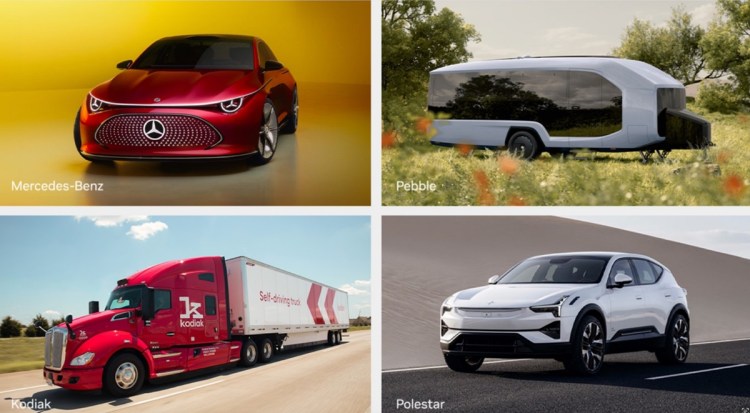Nvidia Showcases AI Innovations and Partnerships at CES 2024
The Transformative Power of AI in Automotive Design
During CES 2024, Nvidia unveiled its latest innovations and partnerships in the automotive and robotics sectors. The lineup of automotive partners showcased cutting-edge technology that demonstrates the transformative power of AI in automotive design, engineering, and performance.
Nvidia’s online event at CES 2024 highlighted the trend towards generative AI and software-defined computing in the automotive sector. These advancements are set to redefine the driving experience in the coming year.
“The transportation industry is embracing centralized compute for highly automated and autonomous driving,” said Xinzhou Wu, Vice President of Automotive at Nvidia. “The AI car computer of choice for today’s intelligent fleets is Nvidia Drive Orin, with automakers increasingly looking to the advanced capabilities and AI performance of its successor, Nvidia Drive Thor, for their future vehicle roadmaps.”
Partnerships and Innovations
- Mercedes-Benz: Mercedes-Benz showcased its software-driven features and advancements within the Mercedes-Benz MB.OS. The Concept CLA Class, equipped with Nvidia Drive Orin, spearheads this display and highlights automated driving capabilities.
- Ansys: Ansys utilizes Nvidia Omniverse to accelerate autonomous vehicle development. Ansys AVxcelerate Sensors showcases the fusion of getting data out of sensors for car safety and more.
- Cerence: Cerence introduced CaLLM, a large language model tailored for the automotive industry. It forms the foundation for its next-gen in-car computing platform, powered by Nvidia Drive.
- Cipia: Cipia’s Cabin Sense is a driver and occupancy monitoring system ready for serial production this year, delivering enhanced safety features.
- Kodiak: Kodiak’s autonomous truck utilizes Nvidia GPUs for high-performance computing, processing vast amounts of data from its sensors to enable autonomous driving.
- Lenovo: Lenovo unveiled its vehicle computing roadmap featuring innovative products based on Nvidia Drive Thor. These products are designed for advanced driver-assistance systems and autonomous driving.
- Pebble: Pebble showcased Pebble Flow, an electric semi-autonomous travel trailer empowered by Nvidia Drive Orin, marking a significant leap in recreational vehicle technology.
- Polestar: Polestar’s Polestar 3, powered by the Nvidia Drive Orin central core computer, emphasizes cutting-edge automotive computing capabilities and a partnership with Google.
- Electric vehicles makers: Great Wall Motor (GWM), Zeekr, Li Auto, and Xiaomi have adopted the Nvidia Drive Orin platform to power their intelligent automated-driving systems. The Xiaomi EV will have a model with a driving range of up to 415 miles on a single charge.
Danny Shapiro, Vice President of Automotive at Nvidia, highlighted the seismic shift in the transportation industry driven by breakthroughs in accelerated computing, generative AI, and digital twins. Nvidia’s unified platform, based on the Nvidia Drive platform and Nvidia Omniverse platform, is transforming vehicle workflows, from concept and styling to engineering and manufacturing.
“No other company offers a unified platform designed to digitalize every aspect of the vehicle lifecycle,” Shapiro said. “We’re seeing great adoption throughout these automakers and more.”
Gerard Andrews, Product Marketing Manager for Robotics at Nvidia, discussed the integration of generative AI into Nvidia’s Isaac robotics platform. This integration will give robots more flexibility for solving problems in places like warehouses.
“Generative AI is coming to Nvidia’s Isaac robotics platform,” said Andrews. “Companies such as Boston Dynamics will be using it to change the landscape of human-robot interaction.”
Deepu Talla, Vice President of Robotics and Edge Computing, emphasized that generative AI is speeding up the ability to bring robots from proof of concept to real-world deployment. The Nvidia robotics ecosystem is witnessing growing use of generative AI, with robotics innovators like Boston Dynamics and Collaborative Robots leading the charge.










